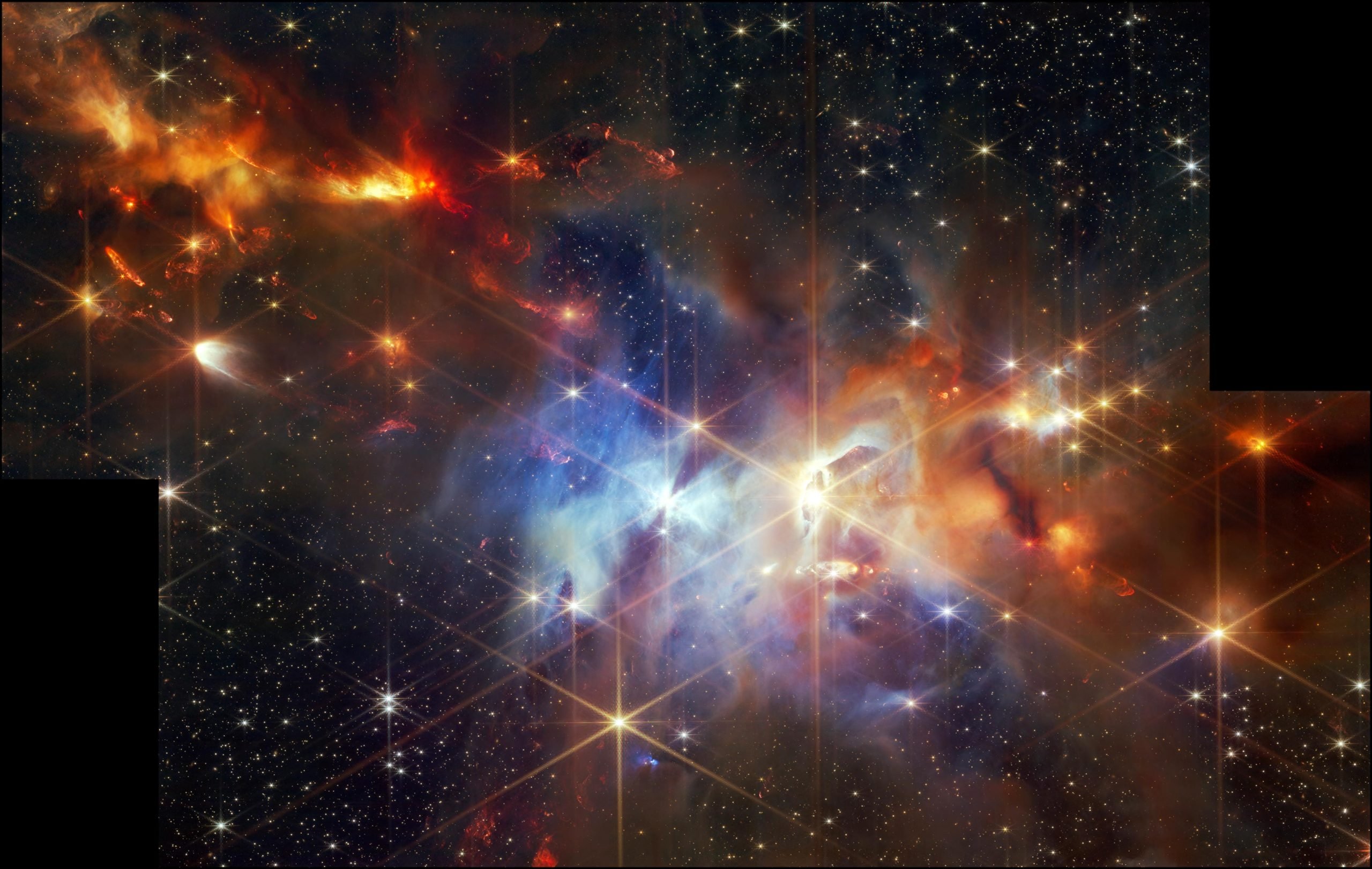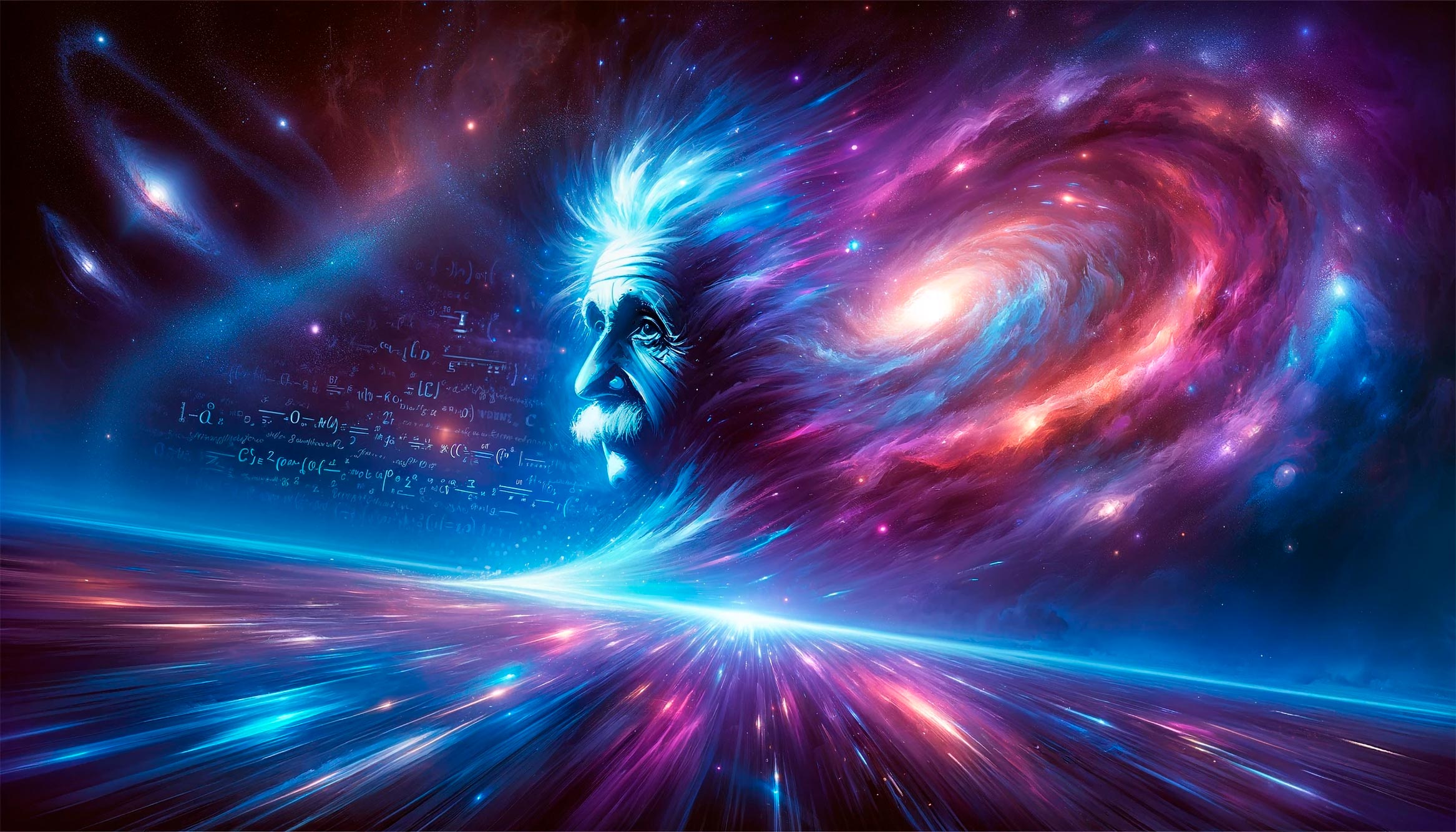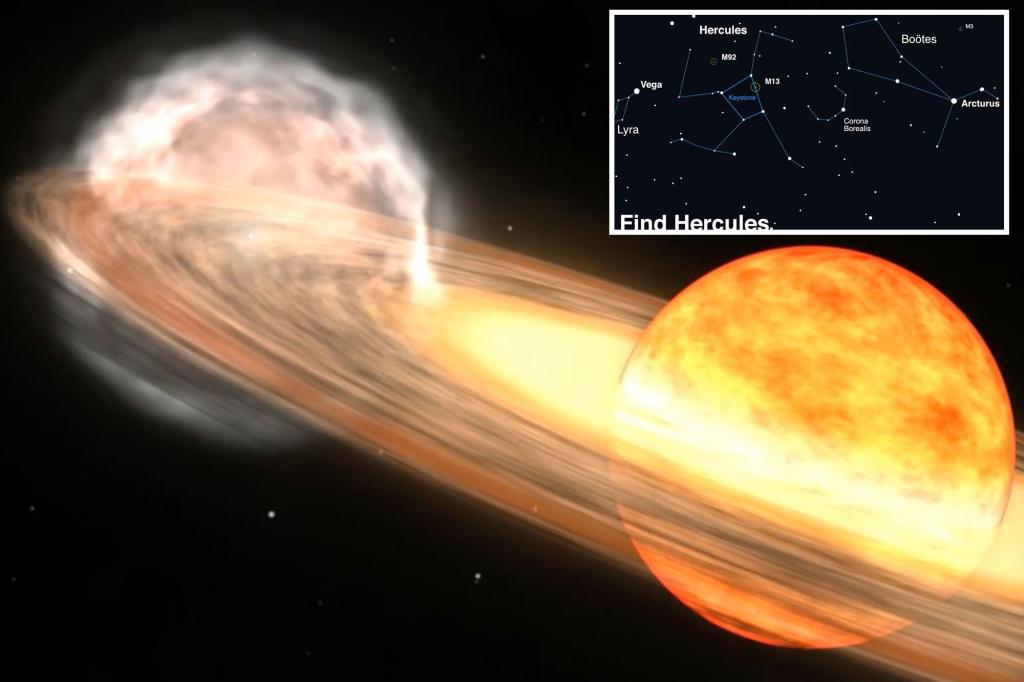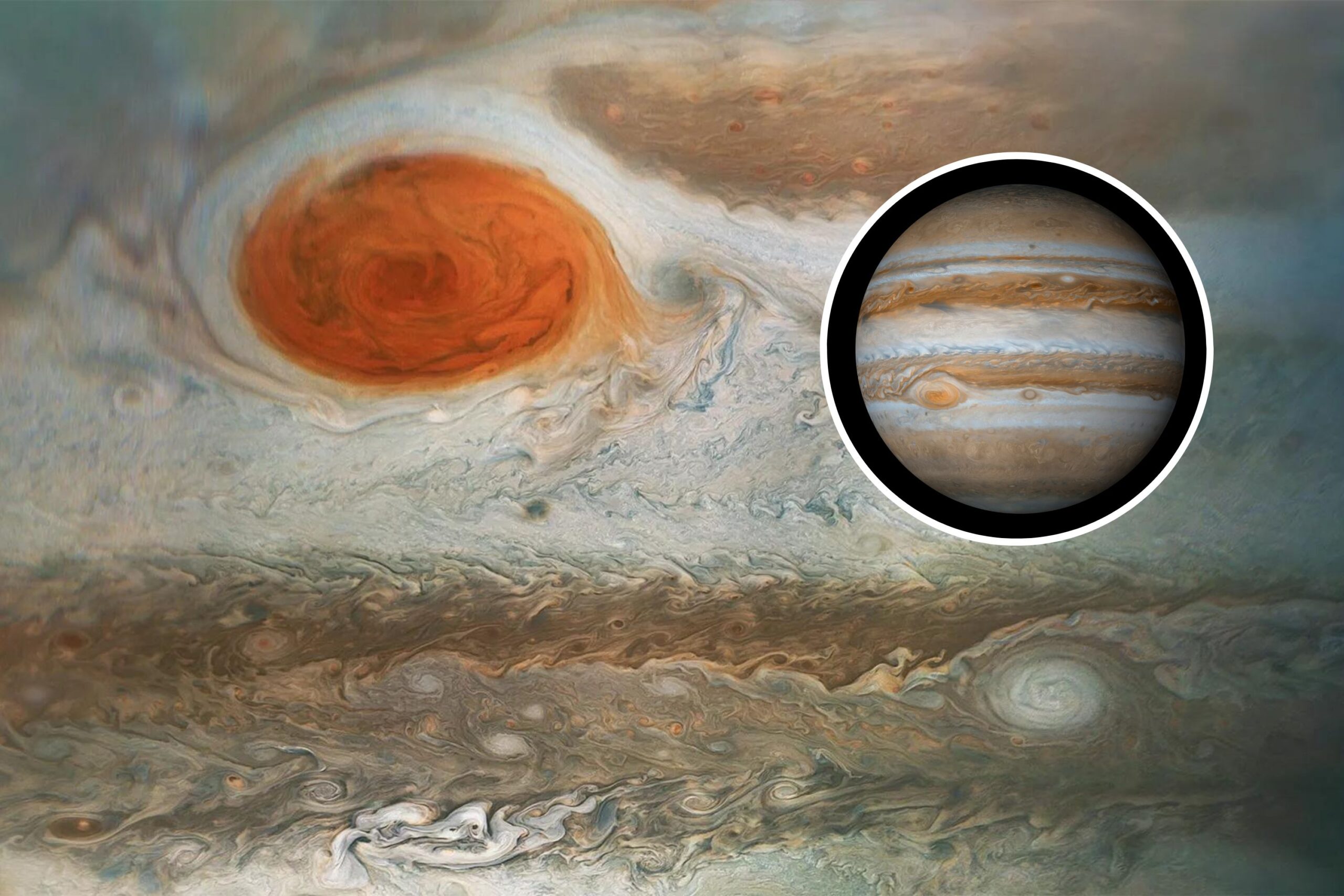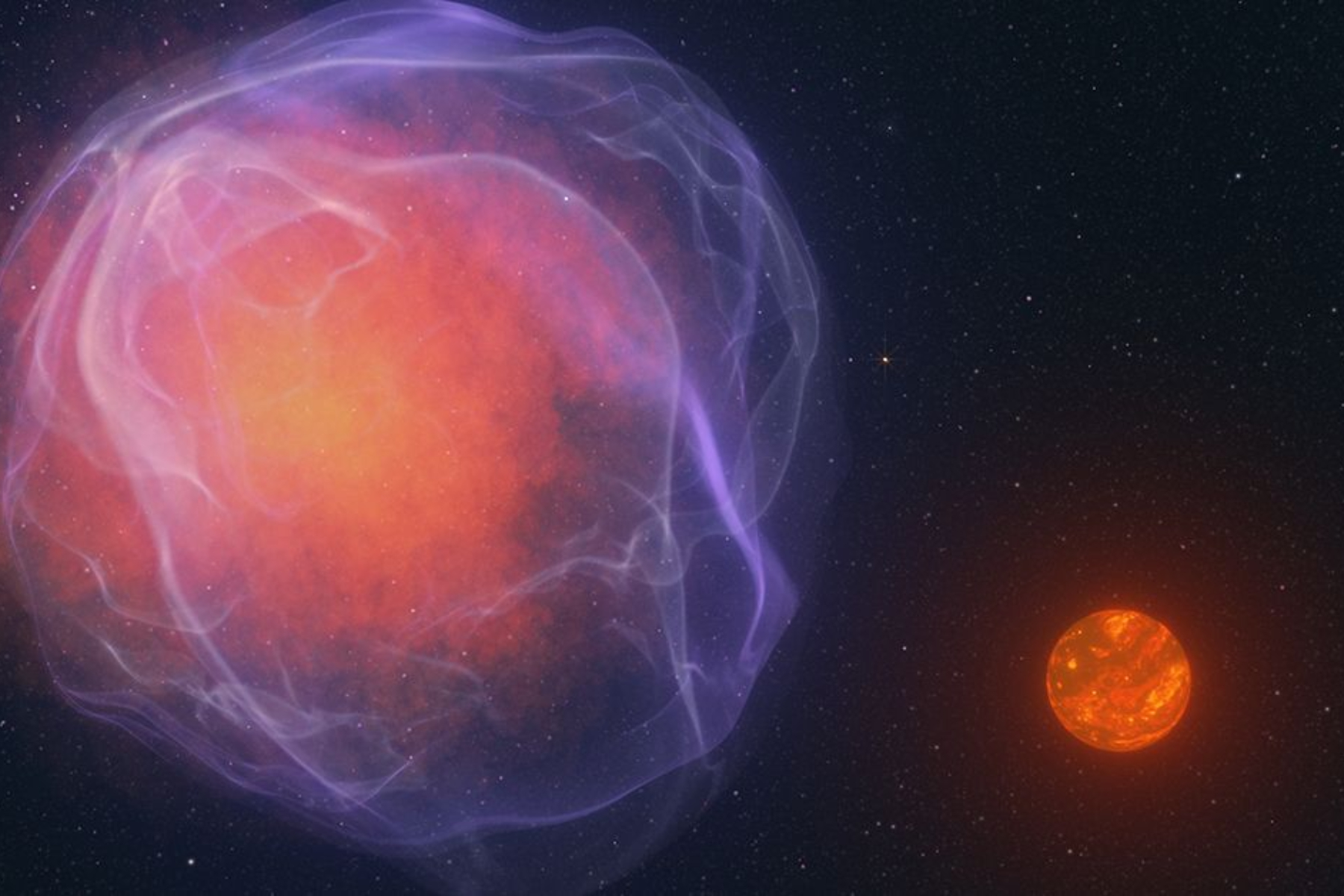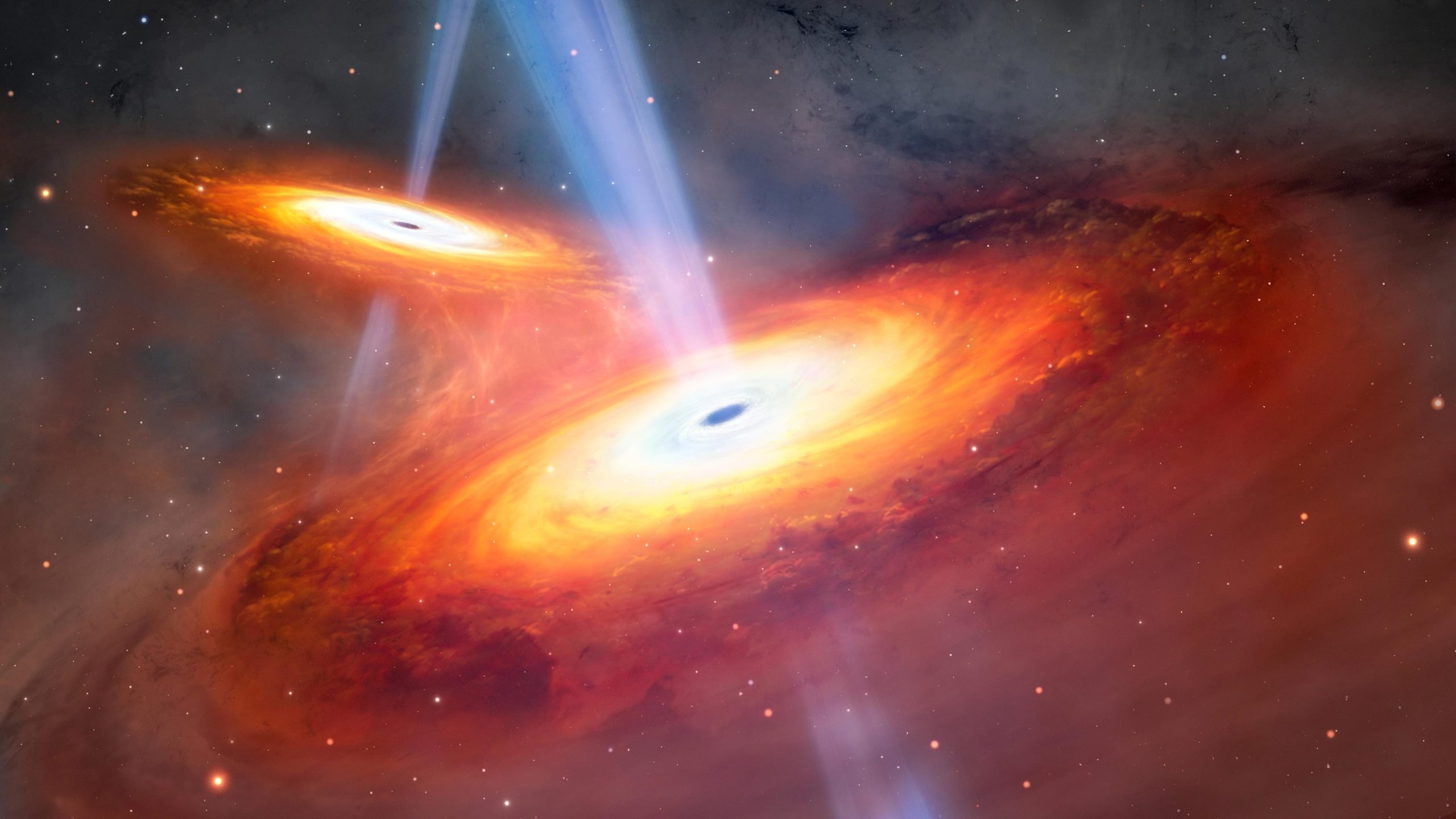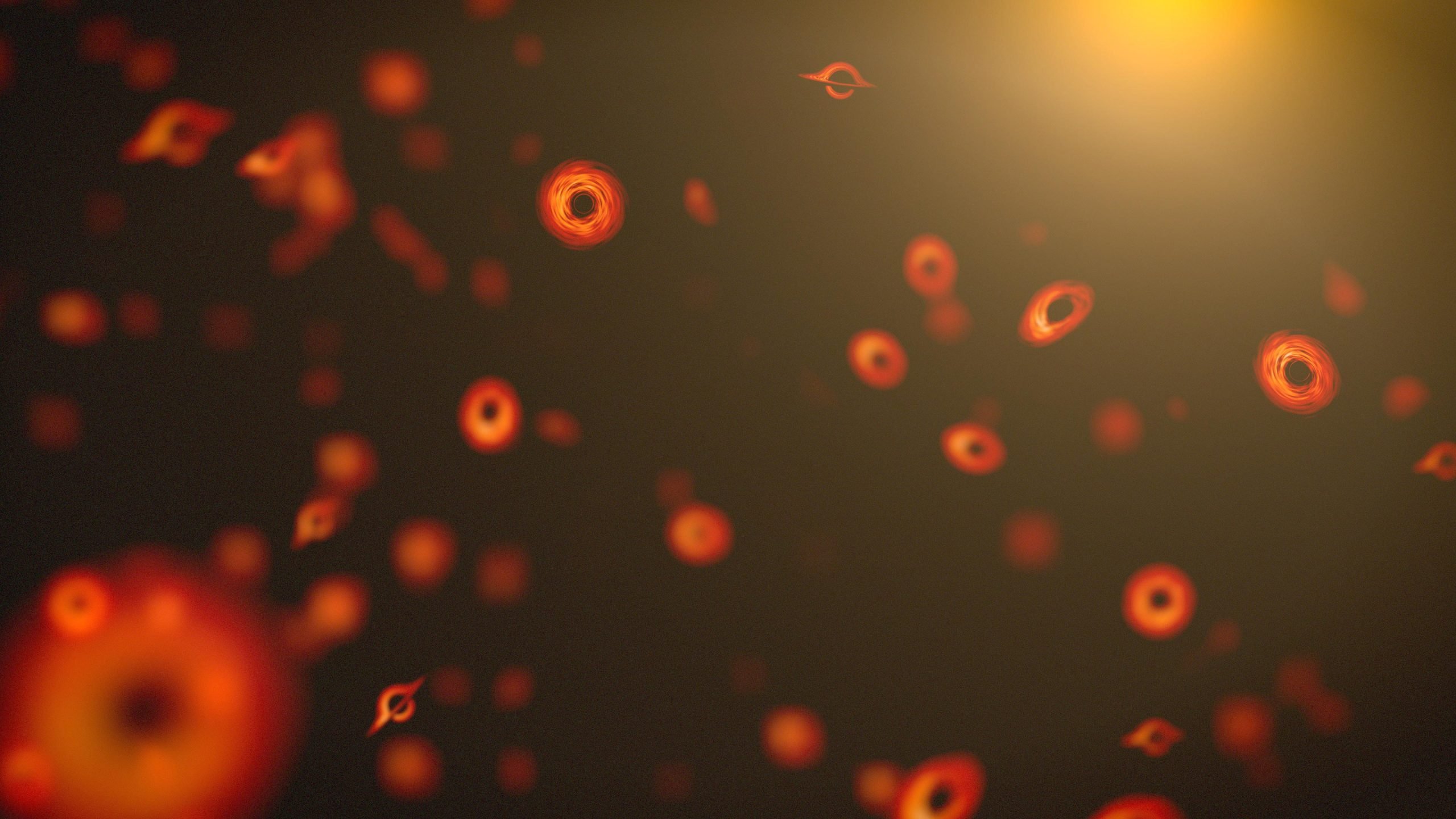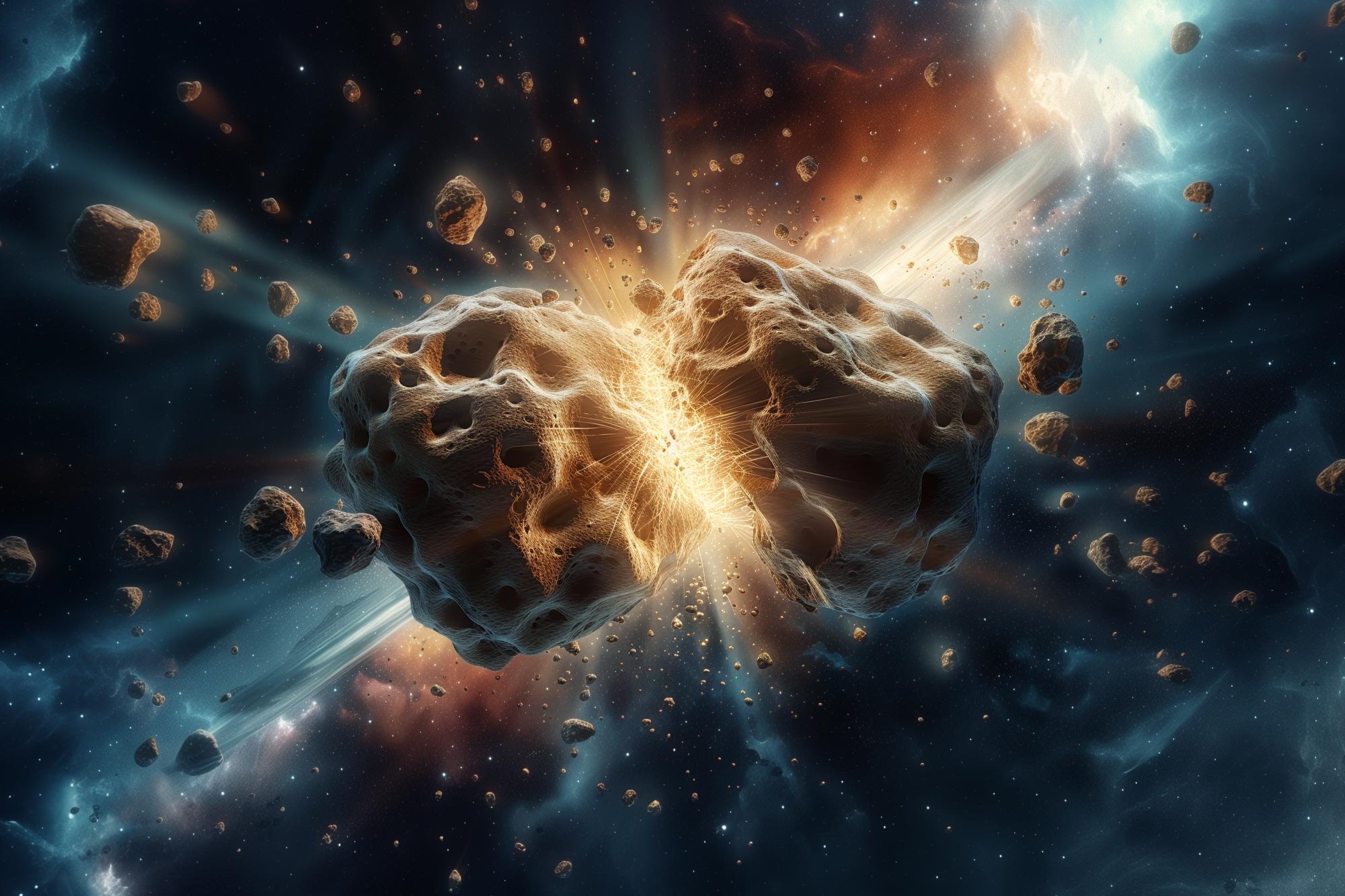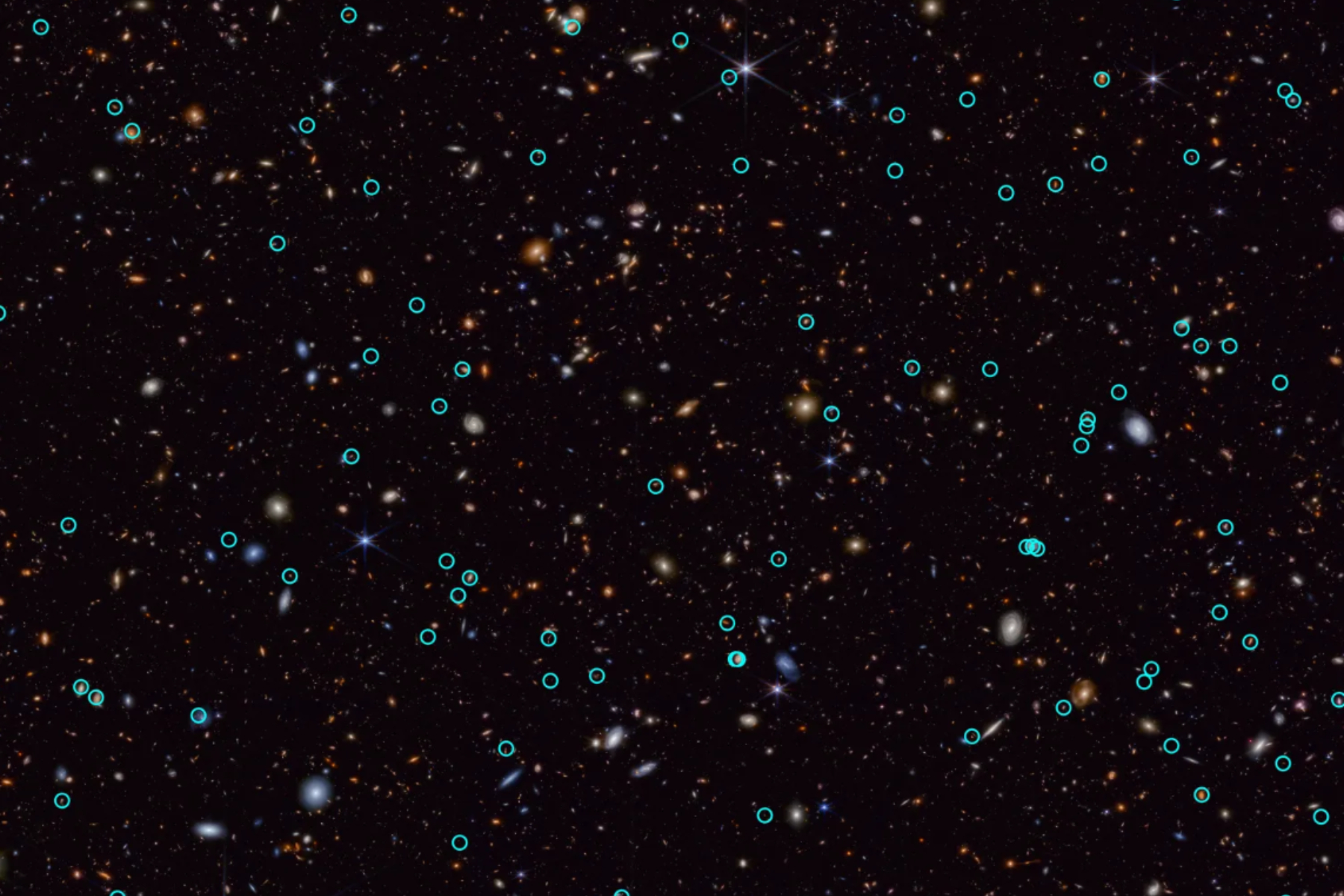Surprising cosmic alignment revealed: Webb telescope reveals stunning stellar jets in the Serpens Nebula
In this image of the Serpens Nebula taken with the near-infrared camera (NIRCam) on NASA’s James Webb Space Telescope, astronomers found a group of aligned protostellar outflows within one small region (the upper left corner). In the Webb image, these jets are indicated by bright clumpy streaks that appear red, which are shock waves from … Read more
